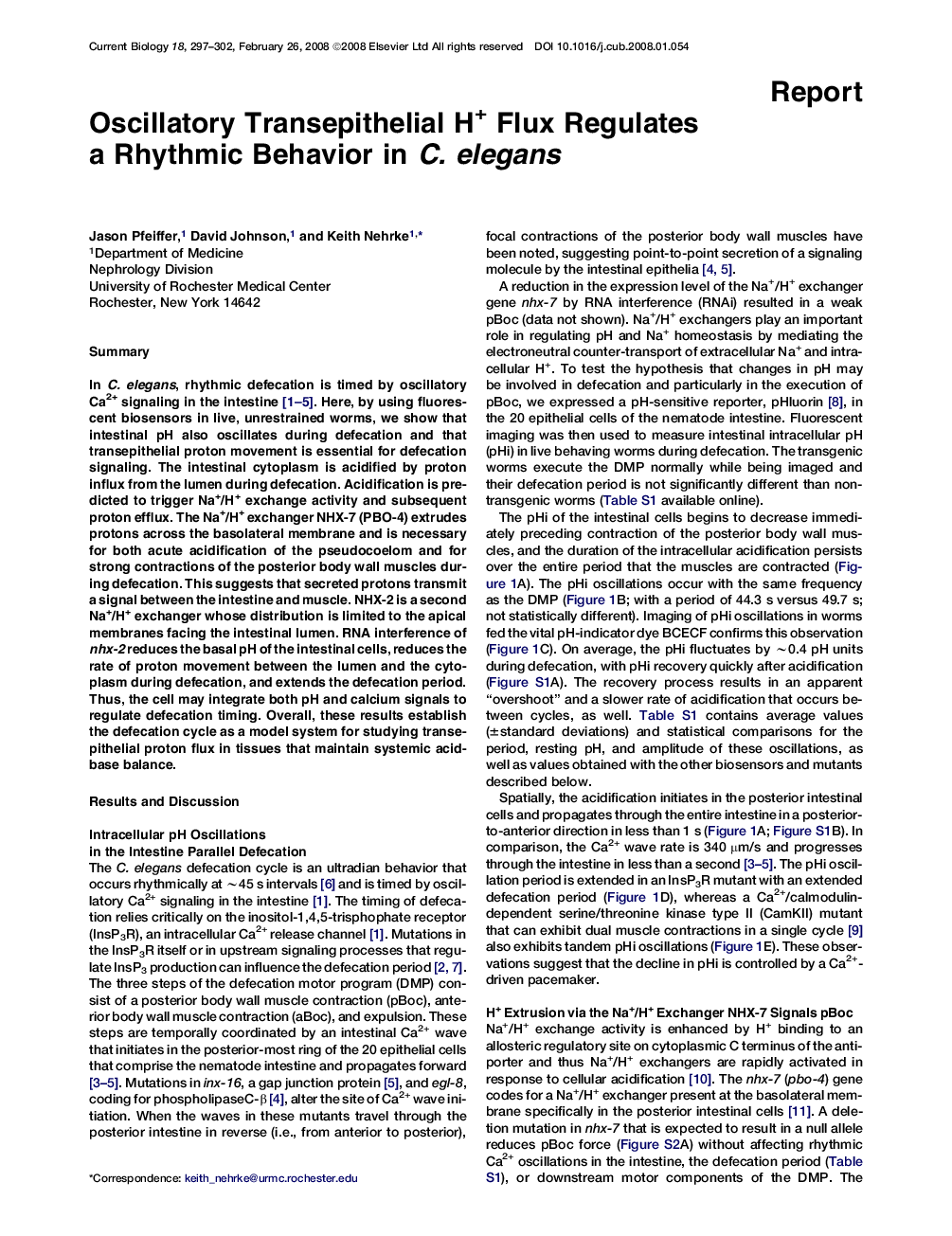| Article ID | Journal | Published Year | Pages | File Type |
|---|---|---|---|---|
| 2044034 | Current Biology | 2008 | 6 Pages |
SummaryIn C. elegans, rhythmic defecation is timed by oscillatory Ca2+ signaling in the intestine 1, 2, 3, 4 and 5. Here, by using fluorescent biosensors in live, unrestrained worms, we show that intestinal pH also oscillates during defecation and that transepithelial proton movement is essential for defecation signaling. The intestinal cytoplasm is acidified by proton influx from the lumen during defecation. Acidification is predicted to trigger Na+/H+ exchange activity and subsequent proton efflux. The Na+/H+ exchanger NHX-7 (PBO-4) extrudes protons across the basolateral membrane and is necessary for both acute acidification of the pseudocoelom and for strong contractions of the posterior body wall muscles during defecation. This suggests that secreted protons transmit a signal between the intestine and muscle. NHX-2 is a second Na+/H+ exchanger whose distribution is limited to the apical membranes facing the intestinal lumen. RNA interference of nhx-2 reduces the basal pH of the intestinal cells, reduces the rate of proton movement between the lumen and the cytoplasm during defecation, and extends the defecation period. Thus, the cell may integrate both pH and calcium signals to regulate defecation timing. Overall, these results establish the defecation cycle as a model system for studying transepithelial proton flux in tissues that maintain systemic acid-base balance.
